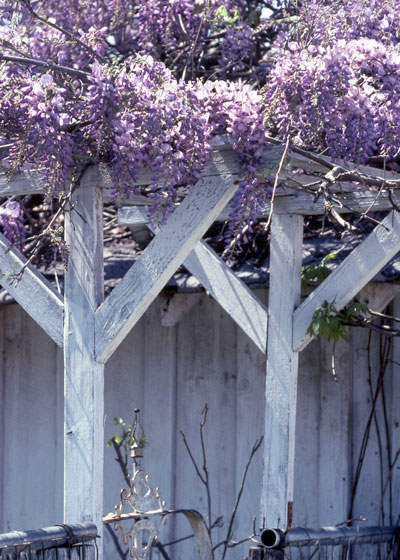Why Do Wisterias Fail to Bloom in the Spring?
I get this question more in April than I do in October, but the causes center around autumn. If I wait until April to answer it, you might not have time to react.

Here are the possible reasons…
We may not be able to pin the failure to flower on one specific cause, but we can certainly narrow it down to the most likely candidates. I’m convinced that there are times when two or more may combine to add up to the eventual lack of blooms in the spring.
• If you are pruning it in the fall or winter, you’re cutting off the flowering wood. This is probably the most likely cause. Wisterias bloom on growth they made in the prior year, so hold off on pruning until after the blooming season.
• If it’s in shade, that will seriously impact its blooming. I’m guessing this is the second most common reason. Many times, we plant them in full sun, but they either grow into shaded locations or shade trees grow larger and end up covering the wisterias.
• If you’re giving it a great deal of nitrogen in late summer and fall (as you would with a fall lawn feeding), that can come at the expense of production of flowers. Nitrogen promotes vegetative growth. It’s best to take a wide pass around your wisterias when you’re making that last feeding of the fall.
• In areas with alkaline soils, wisterias often suffer iron deficiency. That can weaken the plants enough that they do not bloom properly. Try adding iron and a sulfur soil-acidifier, perhaps in a tandem product, to see if the plant’s vigor improves. Keep all iron products off masonry and painted surfaces that could be stained by the iron.
Root-pruning might help…
It might be a little late to try this trick, but it often works. Use a sharpshooter spade to cut a slit 18 to 24 inches out from the trunk all the way around the plant. You’re not trying to cut any taproots – just the lateral roots. The shock of having roots cut will often trigger a wisteria to produce flower buds over the winter.
You could still try it now, but if it doesn’t help this time around, do the root-pruning around Labor Day next year.
